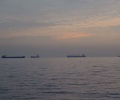Navigating Towards Sustainability: Wind-Powered Cargo Ships and the Future of the Shipping Industry
Navigating Towards Sustainability: Wind-Powered Cargo Ships and ... Hellenic Shipping News Worldwide


Transforming the Shipping Industry: The Potential of Wind-Powered Cargo Ships

The shipping sector is facing increasing pressure to find sustainable solutions. With its heavy reliance on cheap heavy fuel, the shipping industry is a major contributor to greenhouse gas emissions. In response to investor and environmental demands, the industry is exploring new technologies to drive sustainability and reduce its impact on the planet. One such technology is wind-powered cargo ships. Retrofitting advanced wind-propulsion systems onto existing ships has the potential to significantly reduce energy consumption and fuel usage. However, the question remains: are wind-powered cargo ships truly the future of the shipping industry?
The Environmental Challenges of the Shipping Industry
The shipping industry, responsible for 90% of global trade, faces significant environmental challenges. Container ships alone emit approximately one billion metric tons of CO2 annually, accounting for around 3% of the world’s anthropogenic emissions. Despite these alarming figures, governments and international bodies have struggled to effectively regulate the sector, resulting in continued contributions to climate change, air pollution, oil spills, plastic pollution, wildlife collisions, and more.
The 2023 IMO Strategy on Greenhouse Gas Emissions Reduction
In July, the International Maritime Organization (IMO) released a new agreement called the ‘2023 IMO Strategy on the Reduction of Greenhouse Gas Emissions from Ships.’ Under this agreement, the shipping industry committed to achieving net-zero emissions “by or around” 2050. The strategy also includes interim targets: a minimum 20% reduction in emissions by 2030 and a 70% reduction by 2040, based on 2008 levels. While some industry representatives and Pacific Island nations welcomed the agreement, environmental groups criticized it for lacking ambition. They argue that more aggressive targets are needed to urgently address the need for substantial emissions reductions to limit global warming to 1.5 degrees Celsius.
The World’s First Wind-Powered Cargo Ships
Cargill, the world’s largest agricultural shipping firm, is at the forefront of researching ways to reduce emissions and energy usage in the shipping industry through wind-propulsion technology. Recently, Cargill chartered Pyxis Ocean, a dry bulk ship from Mitsubishi Corporation, which has been fitted with WindWings sails developed by BAR Technologies and produced by Yara Marine. These sails, made from steel and glass composite, are 37.5 meters tall and can harness the wind’s power to assist the ship’s propulsion. It is estimated that these sails could potentially reduce the ship’s lifetime emissions by 30%. The installation took place at the COSCO shipyard in Shanghai, and the Pyxis Ocean’s maiden voyage from China to Brazil serves as the initial practical trial for the WindWings system. Cargill will closely monitor the ship’s performance for potential improvements.
On a typical global route, Cargill expects to save approximately one-and-a-half tonnes of fuel per day with the WindWings system. With four wings installed on a vessel, this amounts to an impressive six tonnes of fuel saved daily, resulting in a substantial reduction of 20 tonnes of CO2 emissions per day. In addition to reducing emissions and fuel costs, the WindWings system helps vessel owners meet energy efficiency regulations.
The WindWings project is co-funded by the European Union and is part of the CHEK Horizon 2020 initiative, coordinated by the University of Vaasa in Finland. This project aims to advance zero-emission shipping through an innovative vessel design platform. The platform will showcase two distinct ship designs: one optimized for wind energy in bulk cargo transportation and another powered by hydrogen for cruise purposes. These designs employ a collaborative blend of technologies to achieve a remarkable 99% reduction in greenhouse gas emissions and conserve a minimum of 50% energy. The focus is on enhancing the synergy among these technologies as they operate together for the first time. Ultimately, CHEK aims to investigate how this approach could impact the overall greenhouse gas emissions of the global shipping fleet.
The Future of the Shipping Industry
While wind-powered cargo ships show promise, there are challenges associated with the adoption of WindWings technology. Economic viability is a concern, as there are no guarantees of cost-effectiveness. While wind power offers several advantages, it alone may not be sufficient to achieve a green transformation in the shipping industry. Currently, the technology is only adopted by a limited number of commercial cargo ships, and for a more significant impact, it needs acceptance among major industry players. Additionally, wind power is just one piece of the puzzle, and complementary solutions are necessary to drive meaningful change in reducing fossil fuel use and emissions in the industry.
Source: Earth.Org
SDGs, Targets, and Indicators
| SDGs | Targets | Indicators |
|---|---|---|
| SDG 13: Climate Action | Target 13.2: Integrate climate change measures into national policies, strategies, and planning | Indicator not mentioned in the article |
| SDG 14: Life Below Water | Target 14.1: By 2025, prevent and significantly reduce marine pollution of all kinds, particularly from land-based activities, including marine debris and nutrient pollution | Indicator not mentioned in the article |
| SDG 7: Affordable and Clean Energy | Target 7.2: Increase substantially the share of renewable energy in the global energy mix by 2030 | Indicator not mentioned in the article |
| SDG 9: Industry, Innovation, and Infrastructure | Target 9.4: Upgrade infrastructure and retrofit industries to make them sustainable, with increased resource-use efficiency and greater adoption of clean and environmentally sound technologies and industrial processes | Indicator not mentioned in the article |
1. Which SDGs are addressed or connected to the issues highlighted in the article?
The SDGs that are addressed or connected to the issues highlighted in the article are:
– SDG 13: Climate Action
– SDG 14: Life Below Water
– SDG 7: Affordable and Clean Energy
– SDG 9: Industry, Innovation, and Infrastructure
2. What specific targets under those SDGs can be identified based on the article’s content?
Based on the article’s content, the specific targets that can be identified are:
– Target 13.2: Integrate climate change measures into national policies, strategies, and planning (under SDG 13: Climate Action)
– Target 14.1: By 2025, prevent and significantly reduce marine pollution of all kinds, particularly from land-based activities, including marine debris and nutrient pollution (under SDG 14: Life Below Water)
– Target 7.2: Increase substantially the share of renewable energy in the global energy mix by 2030 (under SDG 7: Affordable and Clean Energy)
– Target 9.4: Upgrade infrastructure and retrofit industries to make them sustainable, with increased resource-use efficiency and greater adoption of clean and environmentally sound technologies and industrial processes (under SDG 9: Industry, Innovation, and Infrastructure)
3. Are there any indicators mentioned or implied in the article that can be used to measure progress towards the identified targets?
No, the article does not mention or imply any specific indicators that can be used to measure progress towards the identified targets.
Behold! This splendid article springs forth from the wellspring of knowledge, shaped by a wondrous proprietary AI technology that delved into a vast ocean of data, illuminating the path towards the Sustainable Development Goals. Remember that all rights are reserved by SDG Investors LLC, empowering us to champion progress together.
Source: hellenicshippingnews.com

Join us, as fellow seekers of change, on a transformative journey at https://sdgtalks.ai/welcome, where you can become a member and actively contribute to shaping a brighter future.







